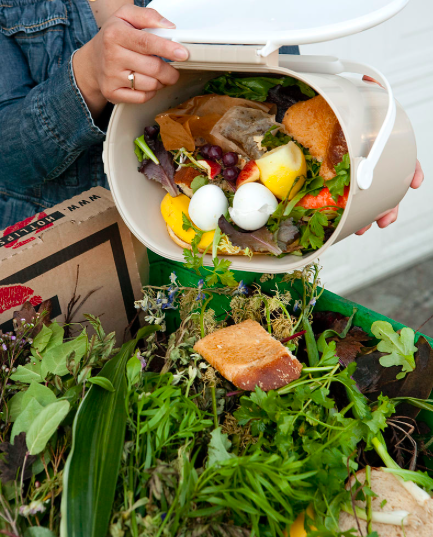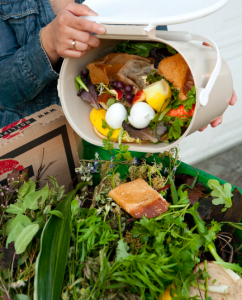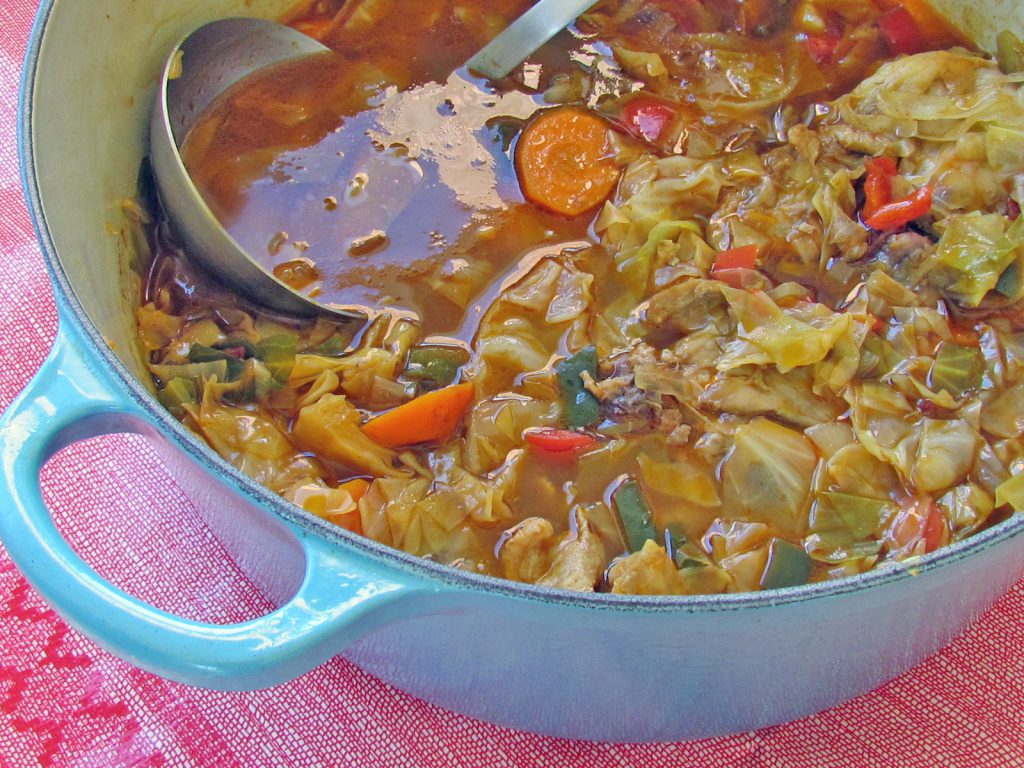

Americans waste between 30% and 40% of edible food. Save your food dollars by using those peels, stalks, and rinds in recipes instead of throwing them away. (Photo credit: By Tim Jewett – City of Portland Bureau of Planning and Sustainability)
Can you afford to throw out food? Probably not, but you might be doing exactly that (up to 40% of food is wasted, according to the USDA). The biggest contributors to food waste are the perfectly edible peels, stalks, stems, and cores that we mindlessly toss into the garbage. But these can be nutritious and delicious additions to your table, if properly prepared. Everything from corn cobs to onion peels to strawberry cores can be used, and they’re a great way to increase the vitamins and minerals in your meals!
To save food scraps you can either keep a container in the freezer and add scraps gradually, or keep a container in your refrigerator for scraps that you can use daily, or every few days, in recipes, salads, and even sandwiches. Because of the added water, frozen scraps are best used in stock and soup recipes, and don’t forget to wash your produce before slicing or peeling so it’s already clean when you’re ready to cook.
MEALS
Make pizza crusts, or tortillas using finely minced vegetable scraps. This works best using stems and peels from harder vegetables like broccoli, cauliflower, and carrots. The flavors of these vegetables are neutral enough not to overpower your recipes, and they contain less water, which makes them a better match in pizza crust and tortilla recipes.
Enhance lasagna, pasta dishes, vegetable slaws, tacos, and more by adding food scraps. Consider mushroom stems, broccoli stalks, cauliflower leaves, tomato ends, squash ends, carrot peels, potato peels, kale stems, and more. The only limit here is your imagination, but the best fits are recipes where a mix of vegetables is already present.

Save your vegetable scraps in the freezer. Everything from carrot tops, to kale stems to cauliflower leaves can be added to your favorite soup recipe. (Photo: Christina Keibler)
SOUPS
Making vegetable stock is one of the easiest ways to use all of your vegetable scraps because making stock allows you to save everything in the freezer until you’re ready to make stock. Just place peels, stalks, cut ends, and more into a container in your freezer. When it’s full, dump the frozen contents into a pot with fresh garlic, salt, and pepper, and cover with water. Bring to a boil, cover, simmer for 45 minutes, then strain. Use the stock in other soup recipes, or just serve as a broth by itself.
Along with using homemade vegetable stock in your favorite soup or stew recipes, you can also use food scraps as a co-star in your favorite soup recipes. Are you making a black bean soup, chili, a cream soup, or zucchini vichyssoise? Add a variety of vegetable scraps, chopped, to the recipe, and either leave them whole or incorporate them into the soup using a regular or stick blender.
SNACKS
Making chips with thinly sliced or peeled vegetable or fruit scraps is a great way to make delicious snacks. You can either fry them in oil as detailed in this recipe, or spray or toss parsnip, carrot, potato, sweet potato, beet, apple, or pear peels with some oil, season them to taste, and put them on a rack in your oven for about 30 minutes at 300F until they become crisp.
Mixed veggie dips are also a great way to use vegetable scraps that would otherwise go to waste. Use them as spreads for sandwiches and wraps, or as dips for other vegetables, crackers, or tortilla chips. We recommend roasting veggie scraps using this method, then combining them in a blender with plain yogurt, oil, and seasoning until smooth. (Use 2 cups of roasted vegetable scraps per 1 cup of yogurt, 1 tbsp of oil, 1 tbsp lemon juice or vinegar, and season with salt, pepper, and chile flakes. Or come up with your favorite herb and spice combination!)
BEVERAGES

Smoothies are a great place to use both fruit and vegetable peels and stems, as an accent to your favorite smoothie recipe. (Photo: Denise Miller)
Smoothies remain popular, and adding vegetable and fruit scraps is a great way to increase the nutrition and fiber content of your smoothie. Keep additions to more neutral tasting vegetables like cauliflower or sweet potatoes, but pretty much all fruit scraps, including citrus peels, are free game! (We like this recipe.) Just be sure to avoid seeds and pits, which can sometimes taste bitter, or even be mildly toxic.
Making teas and infused waters helps increase your liquid intake without buying expensive flavored waters from the store. They are also delicious treats! Fruit peels from apples, pears, and pineapples, or cores from strawberries and other fruits are great to add to tea or plain water (just let the peels or cores sit in cool water for at least four hours, or overnight in the refrigerator, before drinking.) Using produce scraps, like beets or sweet potatoes, in tea and water provide a variety of unexpected flavor options to your normal tea, so don’t be afraid to experiment.
SWEETS
Apple cores, mixed citrus peels, melon rinds, and even corn cobs can be used to make sweet marmalades, jellies, and syrups (adjust recipes by substituting a portion of the fruits called for in the recipe with your fruit scraps). Corn cob jelly is a Native American recipe, and indigenous peoples have been using all parts of crops to their full extent for thousands of years. We can preserve the harvest and save money by following their example.
By, Christina Keibler
SaveSave


I’ve been composting some of the”scraps” described here for a couple of years now as I’ve started to garden more. But this way sounds far more resourceful to get greater value of every dollar I spend on fresh produce, not to mention “enhancing” any dish with tiny fragments of nutrient-rich food! Going to give some of these tips a shot this winter for sure.
Thanks for reading, Scott! Let us know how that goes for you.